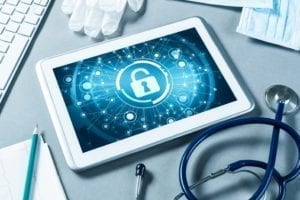The following is a guest article by Dr. Mike Petersen, Chief Clinical Innovation Officer, NTT DATA Services.
 Recently, at the Apple’s Worldwide Developers Conference (WWDC), the company announced a series of features and updates focused on personal health and wellness including the new Apple iOS 15 new health data sharing.
Recently, at the Apple’s Worldwide Developers Conference (WWDC), the company announced a series of features and updates focused on personal health and wellness including the new Apple iOS 15 new health data sharing.
Apple iOS 15 new health data sharing capabilities are the next logical step in the evolution in providing the consumer the power of controlling aspects of their health data. Currently, you can’t share health data via Apple Health and this will now provide clinicians a view of certain aspects of your personal health outside the four walls of the hospital. It also demonstrates a growing demand for having secured control for their own data and having the option to share salient aspects of their health.
This announcement serves as the barometer to what has been an expected trend in the health industry which is to respond to a growing demand for a consumer experience that is informed by various digital experiences outside health and wellbeing. This new feature provides the consumer the control they want but will force healthcare systems, electronic health record vendors, and other healthcare vendors to adapt to consumer expectations, but more importantly, nudge companies to evolve their digital pursuits to enable data sharing and interoperability with the EMR’s and health systems. It also brings forward the notion that it shouldn’t matter what health system I use and that my medical data follows me wherever I go…”bye bye medical record fax permission forms or radiology CD’s” where I’m forced to physically obtain or sign which of course takes time.
Today patients continue to bring questions and notes on their phones or on handwritten notebooks. The Apple health sharing option will allow clinicians equipped to ingest this data to evaluate trends outside of the hospital around exercise, diet, HR and other evolving IoT/health app parameters. One untoward administrative impact will be the voluminous data points (noise) that exists as more devices plug into the apple health app, the clinician will have to discern which pieces are relevant to the visit and does that take time away from patient care activities.
Although the announcement is generating thoughtful reflection in the in the industry, it’s too early to tell if this will be the bellwether for other companies. This may be just a fancy feature that only some use or there may be some added administrative tasks to the clinician. One might question that in a post pandemic view on health equity, does this only serve those who can afford an iPhone or is there a level of digital literacy required for an aging population that may be weary of sharing. Trust is an intrinsic determinant in whether a population will adopt this feature. I do think it will challenge others to rethink how they evolve their current strategies on linking their tech/apps the Apple healthcare app or how their tech/app can link into the EMR.
The pandemic has accelerated the implementation of telehealth and technology in the healthcare industry – this is just another example of the added capabilities technology can bring to the patient experience. As we continue to recover and adjust to this new side of the healthcare industry, I predict we will start to see many more examples such as this Apple announcement of companies elevating their current technology to cross into the health space. While some of these will be quick for adoption, others might take a bit more time, following the traditional lengthy timeline healthcare has taken around innovation. One thing we know for sure, there is no going back to the healthcare industry pre-pandemic – we will need to embrace the change and continue with the movement.













